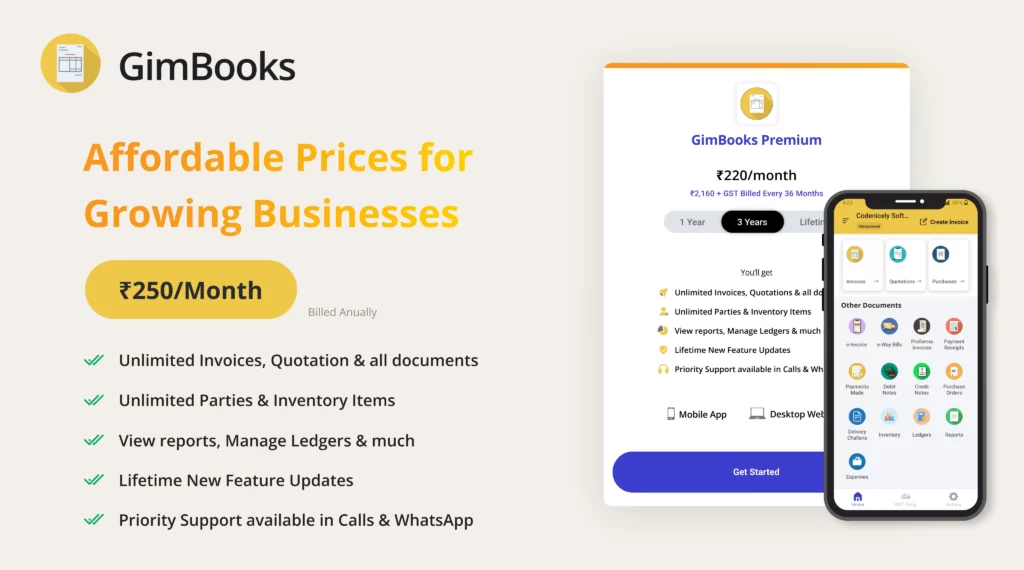Every business, from tech services to healthcare, needs to send invoices to get paid. In the old days, your invoicing process was likely all about paper bill book. People used to print out invoices, send those prints by mail to clients, and wait for confirmation because they don’t know how many days or payment proof.
But, after having electronic invoicing, or e-invoicing, things got changed entirely. This easy invoice maker supercharged way of handling invoices. No more waiting for snail mail. Here’s a cool fact: In 2021, the global e-invoicing market was worth a whopping $8.74 billion. And guess what? It should reach $29.68 billion by 2027. That’s a massive jump!

What are E-Invoices?
At its core, an E invoice is a digital version of the traditional paper invoice. Instead of a tangible piece of paper exchanged between buyer and seller, an e-invoice is a digital file that captures the details of a commercial transaction.
It encompasses the same crucial information—item descriptions, quantities, prices, and total amounts—but in a format that exists purely in the digital realm facilitating efficient record-keeping and simplifying the process like of tax invoice.
The Anatomy of an E-Invoice
Imagine your traditional paper invoice transformed into a digital avatar, and now you have the power to generate bills digitally with the help of eway bill generate, similarly, consider a scenario where invoices are seamlessly created and managed through an efficient billing software, which means no need for physical papers. That’s what exactly an e-invoice does!
E-invoice typically includes:
- Supplier Information: Details about the seller, such as their name, address, and tax identification.
- Customer Information: Information about the buyer, ensuring clarity about who the invoice is intended for.
- Invoice Date and Number: A clear indication of when the invoice was issued and a unique identifier for easy tracking.
- Itemized List of Products or Services: A breakdown of what is being invoiced, including descriptions, quantities, unit prices, and total amounts.
- Taxes and Discounts: Clear delineation of applicable taxes and any discounts applied.
- Total Amount Due The grand total that the buyer is expected to pay.
- Now that we’ve demystified the basic components let’s delve into the myriad benefits of adopting e-invoices in your business operations.
The Advantages of E-Invoices:
1. Speed and Efficiency:
Traditional invoicing methods often involve manual data entry and physical mailing, which can be time-consuming. E-invoices, on the other hand, can be generated and transmitted swiftly, reducing the time it takes to complete transactions, and facilitating efficient logistics management through options like E waybills.
2. Error Reduction:
With manual data entry comes the risk of errors—miscalculations, typos, and the like. E-invoices, being generated digitally, significantly reduce the likelihood of such errors, contributing to financial accuracy.
3. Enhanced Visibility:
E-invoices provide real-time visibility into the status of transactions. Businesses can track when an invoice is received, viewed, and paid, facilitating better cash flow management.
4. Environmentally Friendly:
Moving away from paper-based invoices aligns with eco-friendly practices, contributing to sustainability efforts by reducing paper consumption and waste. Utilizing a GST billing app further enhances efficiency and compliance in the invoicing process.
5. Improved Record-Keeping:
Digital storage of e-invoices makes it easier to organize and retrieve documents when needed. This contributes to a more organized and accessible record-keeping system.
In closing:
Embracing e-invoices is not just a technological upgrade; it’s a transformative step for businesses. This digital evolution in invoicing provides a myriad of benefits, including enhanced efficiency, heightened accuracy, and a commitment to sustainability. By adopting GST billing software, businesses can navigate towards a streamlined future where financial transactions are not only simplified but optimized for success.